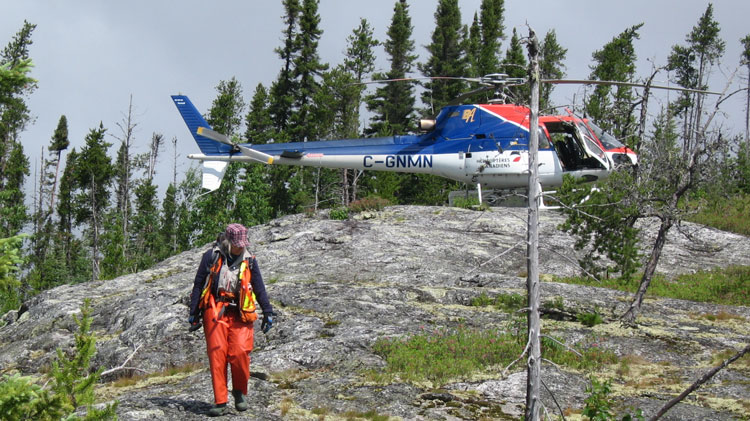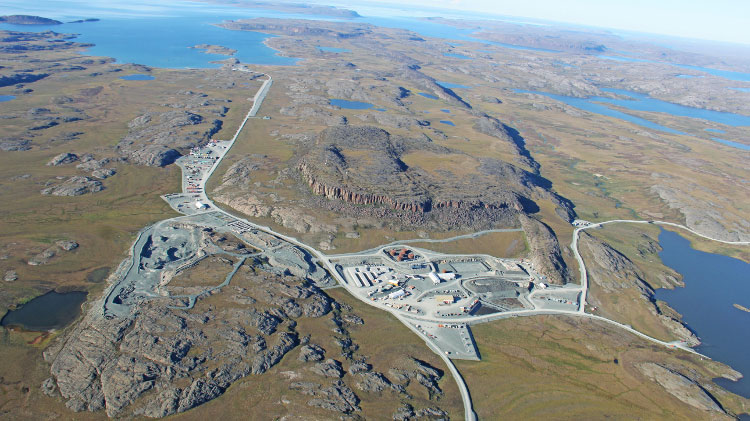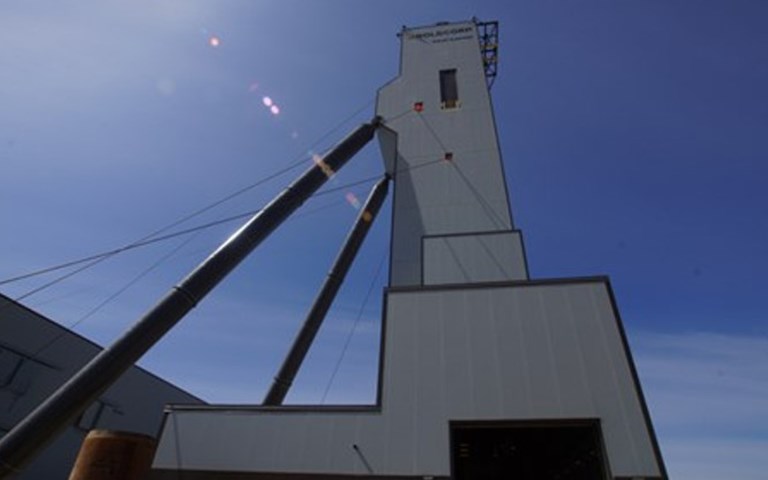The headframes for Goldcorp’s Éléonore mine were built using modular techniques that cut costs | Courtesy of Goldcorp
In 2010, when Goldcorp staff decided to use pre-assembled components to build the headframe for the exploration shaft of the Éléonore project, it was not clear how easy it would be to manipulate such large pieces once they arrived on site. But the experience turned out to be so positive that the company used a similar method for its 80-metre-high production headframe, taking the lead in one of the most promising avenues for remote mining project development: modular construction.
Located in the northeast corner of the Opinaca reservoir in the James Bay region of Quebec, the Éléonore project is typical of mines at the 52nd parallel. Challenges include a harsh environment, remoteness and, as a result, scarce – and costly – human resources. Thankfully it is connected by road to both James Bay and settlements in the south.
“When you have such restrictions that you depend mostly on a fly-in/fly-out schedule, any single hour that you can save on the work site becomes critical,” says Manon Bérubé, engineering and construction manager at Goldcorp. “By transferring these hours from the work site to an indoor factory, not only do you avoid the common problems related to personnel management, such as flights and available bedrooms, but also more climate-specific issues that make hoisting operations on site much more difficult: the snow, the wind and the cold itself.” Anyone working in temperatures below -20 C will seriously consider anything that can possibly reduce hours spent outside, she explains.
Positive results
In a series of small-scale tests, Goldcorp used pre-assembled pieces for the first time in 2010 for the construction of the headframe for its Gaumond exploration shaft. Structures GB – which supplied most of the steel structures at Éléonore – acquired a new crawler crane for the occasion with a 230-tonne capacity, enough to lift some of the project’s larger components, which in some cases were as heavy as 70 tonnes. “There were concerns about how such large pieces would move in the field, how many cranes would be needed,” says Bérubé.
In the end, it turned out that the company had significantly reduced the amount of hoisting needed to erect the headframe. “It takes more than a week to assemble a 150-part structure on site,” says Gino Roy, production director at Structures GB. “Pre-assembled in one module, it takes two and a half days.”
These encouraging results prompted Goldcorp to push ahead with further modular construction projects, with larger components. In drafting the plans for its production shaft in 2012, the company prioritized the use of pre-assembled parts for as many components as possible, in an effort to reduce the structure’s assembly time on site.
Not all suppliers have the capacity, let alone the room, to pre-assemble pieces indoors in southern locations. “It’s not always possible for them,” says Bérubé. “Some do not have the appropriate facilities, or the right expertise. It was something we included in our calls for bids.” Moreover, some of the components required an engineer’s seal and signature to ensure they were safe. For all of these reasons, suppliers that had the capacity to pre-assemble their pieces were “significantly more competitive,” according to Bérubé.
Rimouski-based Structures GB is one of the few companies in Quebec with the capacity to design, manufacture, and install such large, specialized steel structures. The 80-metre-high, 1,200-tonne headframe could not be delivered in one piece, but it was designed and built in as few components as possible. Structures GB sent 16 tower-like sections for the headframe to the site, each of them consisting of 150 to 200 parts. These 20-metre long components were specifically designed considering the lifting capacity on site. “I asked our engineers not to exceed our weight limit,” says Roy. All in all, modules ended up representing two-thirds of the structure.
The results were astounding. “We reduced our installation time by 30 per cent,” says Bérubé. “This means a 30 per cent reduction in the use of the crane, which is extremely costly.” A crawler crane, such as the one Structures GB used at Éléonore, costs up to $1,000 an hour, according to Roy. Instead of spending a whole day lifting each part and waiting for the workers to screw it tightly, the team can now lift a combined 50 parts, contained in one single section.
According to Bérubé, there is no doubt that these savings have offset the initial cost of ordering pre-assembled components. “In the field, construction workers sometime lose a great deal of their efficiency due to the harsh climatic conditions, which means more costs,” she says. “It is much faster to farm out the assembly; it comes out both faster and cheaper for us.”
Worth their weight
Not every component is worth pre-assembling, but repetitive structures such as the modules composing the headframe seem a perfect fit since they can be manufactured in series. Structures GB was also put in charge of supplying pre-assembled silos, for which the number of parts was cut down from 250 to 10. “Silos were broken down to vertical segments of about five-metres wide,” says Roy. “When they get to the site, the guys just need to screw them together, with no welding needed.”
Goldcorp also ordered pre-assembled concrete formworks from Construction Talbon. “If we’d only needed one formwork, it wouldn’t be worth it, but we needed 25 of them, all of the same size,” says Bérubé.
Weight is not an issue when it comes to transporting modules to site: 70 tonnes of steel is heavy, assembled or not. However, size can be quite a challenge. Bérubé indicates that companies should generally avoid modules requiring non-standard transportation, since they require an escort and fall under numerous road restrictions.
“You can’t drive at night or when it snows, for instance,” adds Roy. “The trip to Éléonore can take one week instead of two days, with transportation costs easily doubling.” But, he argues, “it is still worth it: most of our transports are non-standard.”
Before it was used at Éléonore, modular construction was relatively unknown, recalls Bérubé. In fact, the techniques are considered underutilized across the mining industry. “I gave presentations on our construction methods to my colleagues,” she says. “They were not the kind of initiatives they had heard of before. The concept remains new.
“In many cases, such as the headframe, we were the first ones to use modular construction. Obviously others before us have pre-assembled some of their pieces, but very few of them have done so to the level we have. We pushed modular construction further.”
Development is proceeding on schedule at Éléonore, with first production expected this fall.




